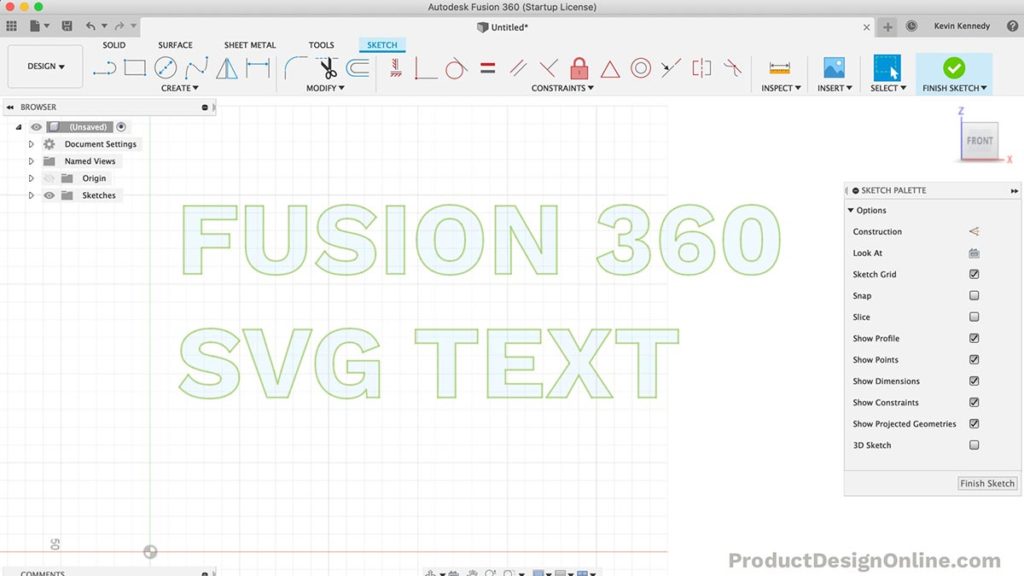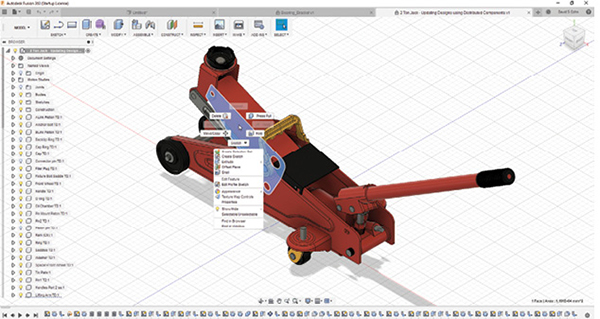

The Rectangle, Circle, Arc, and Polygon items are drop-down controls because they display a drop-down menu when they’re clicked. In the picture below, all of the buttons you see in the sketch toolbar panel and the associated drop-down menu are command controls and start a command when clicked. There are four different types of controls command, drop-down, split-button, and separator. Controlsīoth toolbars and toolbar panels act as containers for toolbar controls. We’ve looked at the elements that define the structure, and now we’ll look at the content of the toolbars and panels, which are defined using controls. When the user selects a different tab, Fusion 360 turns the visibility of toolbar panels on and off, so only those that apply to the active tab are seen. If you iterate through the toolbar panels in a workspace, you will find the isVisible property for many of them is False, meaning that the panel is not currently visible. Getting the panel from a toolbar tab is another way to access the same panel. Panels are guaranteed to be unique within a workspace, so you can access a specific panel if you know the workspace and panel ID. There are two ways to access toolbar panels through the API from the toolbar tab that contains the panel or from a WorkSpace.

For this discussion, we'll focus on the toolbar tabs and their contents, but changing the workspace can also change the contents of the browser and even the model graphics. When changing workspaces, the entire UI morphs to show what's appropriate for the workflow needed by the workspace. The user chooses the active workspace using the large drop-down at the upper-left of the Fusion 360 window, as shown below. Workspaces are the top-level owner of the UI structure.
#SINGLE LINE FONT IN FUSION 360 CODE#
The sample Python code below gets the Toolbar object that represents the QAT. You can use the itemById property on this object to get a specific toolbar when you know its ID. Finally, the toolbar at the bottom center of the window is the navigation toolbar and has all of the view-related commands, and its ID is “NavToolbar”.Īll toolbars are accessible from the UserInterface object through its toolbars property which returns a Toolbars object. The toolbar in the upper-right provides access to the user account and help-related commands, and its ID is “QATRight”. It provides access to all the file-related commands. The toolbar in the upper-left is commonly known as the QAT or Quick Access Toolbar. Each toolbar and all other user interface elements have unique ID’s that you can use to access a specific toolbar. The content of these three is context independent so it remains the same regardless of what’s happening in Fusion 360. There are several available toolbars, but there are three that are always displayed. A control can be a command button or a drop-down containing more controls and are described below. The buttons in toolbars and panels are represented by toolbar controls, which are discussed in the “Contents” section below.Ī toolbar is a container for controls. Shown in blue is the workspace, in red are the toolbars, in yellow are the toolbar tabs, and the toolbar panels are green. Several elements provide structure to how the commands are presented in the user interface, as shown below. When dissecting Fusion 360’s user interface, it can be broken down into two main topics structure and contents. Only if your command is doing something unique from other Fusion functionality should you consider adding new tabs or panels. If it helps control how the design is viewed, it should probably go in the Navigation toolbar at the bottom of the window. For example, if a command modifies an existing model, it should probably be added to the MODIFY panel in the Design workspace. Consider what your command does and where the user would logically look for functionality similar to what your command provides. There is a limited amount of room, and if every add-in writer puts their command in a permanently visible area, there won’t be room for all the commands. Whenever you add a button into Fusion 360’s user interface, you need to carefully consider where it will go. The creation and use of command dialogs are discussed separately as part of the discussion on commands. This topic discusses adding buttons to Fusion 360’s user interface. When customizing Fusion 360’s user interface, there are two separate concepts: adding buttons to allow the user to run commands and creating custom dialogs for your commands.

User-Interface Customization User-Interface Customization with Fusion 360's API


 0 kommentar(er)
0 kommentar(er)
